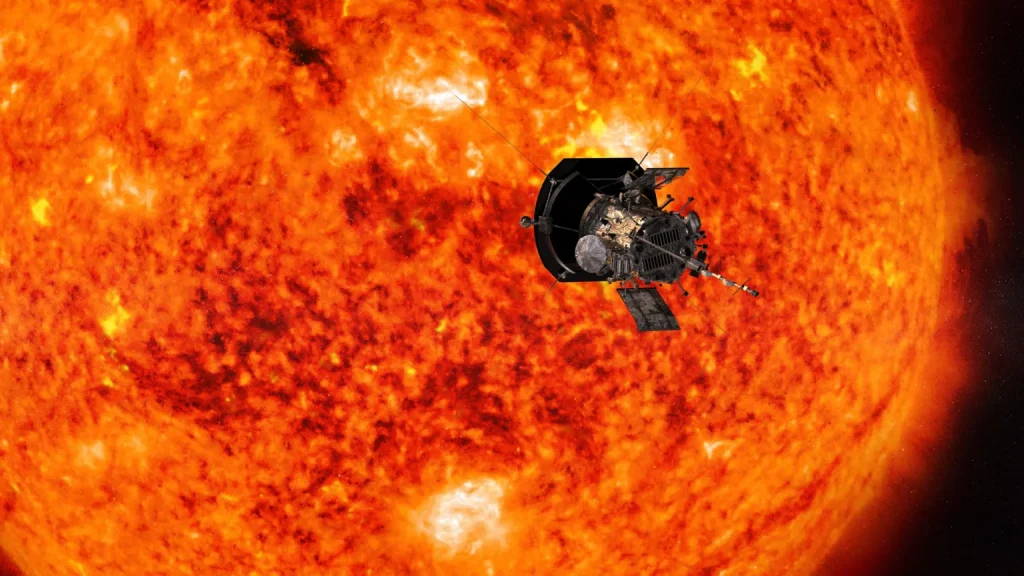
NASA’s Parker Solar Probe has set a new milestone in space exploration by making the closest-ever approach to the Sun. The spacecraft passed within 3.8 million miles (6.1 million km) of the solar surface, plunging into the Sun’s outer atmosphere, known as the corona, on Christmas Eve.
Despite enduring temperatures of up to 1,800°F (980°C) and extreme radiation, the probe successfully transmitted a signal back to Earth, confirming it was safe and operating normally.
The Parker Solar Probe, launched in 2018, aims to unravel long-standing mysteries about the Sun’s behavior. According to Dr. Nicola Fox, head of NASA’s science division, “For centuries, people have studied the Sun, but you don’t experience the atmosphere of a place until you actually go [and] visit it. And so we can’t really experience the atmosphere of our star unless we fly through it.” The spacecraft’s close fly-by will provide scientists with valuable data on how the Sun’s corona reaches temperatures in the millions of degrees, far hotter than its surface.
The probe also seeks to shed light on the solar wind, the stream of charged particles that influences space weather, affecting communication systems and power grids on Earth. Dr. Jenifer Millard, an astronomer at Fifth Star Labs, explained, “The corona is really, really hot, and we have no idea why. The surface of the Sun is about 6,000°C or so, but the corona, this tenuous outer atmosphere that you can see during solar eclipses, reaches millions of degrees – and that is further away from the Sun. So how is that atmosphere getting hotter?”
Traveling at speeds of up to 430,000 mph (692,000 kph), the Parker Solar Probe is the fastest human-made object, a feat achieved by harnessing the Sun’s immense gravitational pull. As Dr. Fox noted, “I will worry about the spacecraft. But we really have designed it to withstand all of these brutal, brutal conditions. It’s a tough, tough little spacecraft.” This record-breaking mission marks a significant step in our understanding of the Sun and its impact on space weather.








